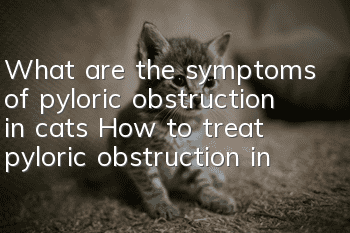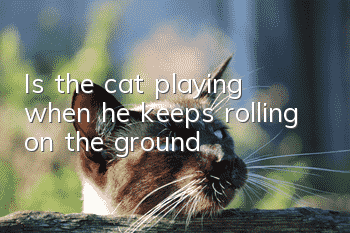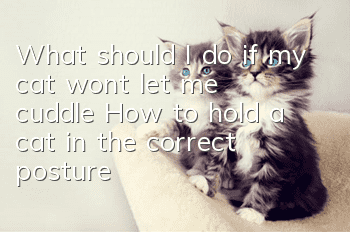What are the symptoms of pyloric obstruction in cats? How to treat pyloric obstruction in cats

Why do cats suffer from pyloric obstruction
Pyloric obstruction is a disease that mostly affects dogs and is rare in cats. It is a digestive system disease. This disease is prone to occur in cats with abnormal pyloric function or congenital or acquired pyloric stenosis. However, the cure rate of this disease is high, so owners do not need to worry too much.
Pyloric antrum mucosal overgrowth (or acquired pyloric antrum hypertrophy) is a disease with a high incidence in small dogs or smaller cats (especially breeds originating from the East) and is the main cause of pyloric obstruction. Other less common causes are chronic pancreatitis and tumors of the pylorus or duodenum. The clinical symptoms of congenital or acquired pyloric stenosis are similar, but congenital stenosis is more common in young animals (usually after switching to solid food), while the more common acquired stenosis is more common in older animals.
What are the symptoms of pyloric obstruction in cats
Pyloric obstruction is divided into congenital and acquired factors. Usually congenital factors are more common in young and young cats, while acquired factors are more common in older cats. The risk of this disease is not very high, and the problem can be better solved with appropriate treatment.
The degree of obstruction varies. The symptoms of pyloric obstruction also vary. Vomiting is the most common symptom and can occur anytime after a meal. Under normal circumstances, the complete emptying time of the stomach is 10 to 12 hours. Therefore, if a cat vomits all or part of its food 12 hours after eating, it indicates delayed gastric emptying and the possibility of pathological changes in the pyloric antrum, pancreas, or duodenum.
Clinical symptoms of sick animals may be normal, or they may show depression, weight loss, or dehydration. If vomiting is severe and prolonged, hypokalemia and metabolic alkalosis can lead to generalized muscle weakness. Some cats exhibit varying degrees of multifocal neurological abnormalities, such as circling, proprioceptor abnormalities, or head droop.
How to treat pyloric obstruction in cats
Cats with pyloric obstruction sometimes experience symptoms such as vomiting, lack of energy, dehydration, etc., and some cats have a longer course of disease. Weak cats often vomit, which may lead to metabolic alkalosis, and the treatment of this disease is generally It is solved through surgery.
Ultrasound examination of sick cats can reveal thickening of mucous membranes or muscles. If ultrasonographic equipment is unavailable or the findings are not diagnostic, contrast radiology or gastroscopy should be performed. Animals with pyloric hyperplasia have a typical coracoid process on angiograms, whereas animals with sinus mucosal hyperplasia show sinus filling defects. Endoscopy usually reveals a stomach full of food (sometimes even in animals that have been fasted for more than 24 hours). Animals with pyloric sinus mucosal hyperplasia have obvious hypertrophy and hyperplasia of the sinus mucosa, which resembles a tumor. Pyloric hyperplasia of animal sinusesThe mucosa appears normal. The endoscope can penetrate the duodenum without any resistance.
Most sick animals must undergo surgical laparotomy and pyloroplasty, but pyloroplasty is not required for pyloric obstruction caused by foreign bodies. "Y-U-shaped" pyloroplasty followed by submucosal resection is the best method to treat pyloric sinus mucosal hyperplasia. Although the texture of tumor tissue is harder than that of hyperplastic mucosa in most cases, tissue must be collected for histological examination to completely rule out the possibility of tumor. Mucosal biopsies are generally normal in animals with pyloric muscle hyperplasia.
- How to deworm cats? How to deworm cats?
- Should I give my cat tap water or filtered water?
- What kind of cat is the Ragdoll cross?
- How to stimulate defecation in kittens?
- Why do I always feel itchy if I have a cat?
- How to train a Balinese cat to sleep in a cat's nest How to train a Balinese cat to sleep in a cat's nest
- Cat vomited after eating too much
- Why can’t a female cat urinate?
- Will cats get sick if they change their environment?
- There is black stuff on the cat’s testicles



